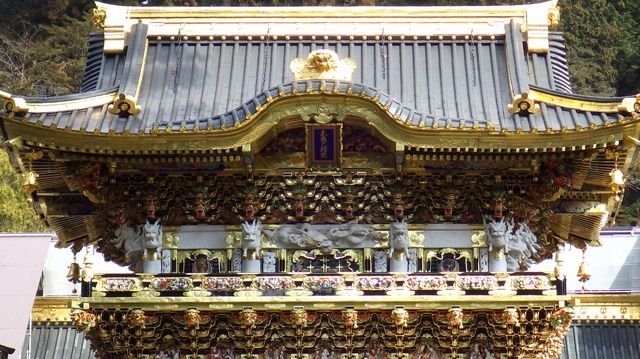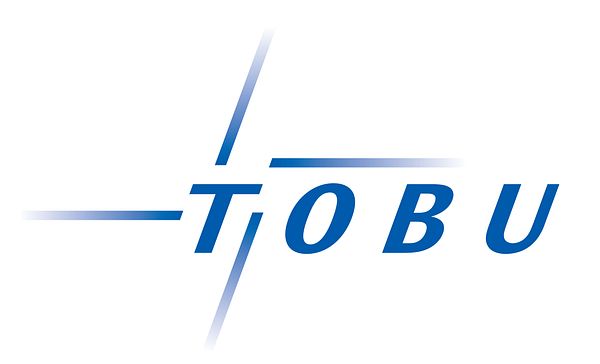
Press release -
Trip to World Heritage Sites and Post Towns on the “Samurai Route”
The area covered by Tobu Railway lines which stretch across 4 prefectures around Tokyo is where the “Samurai Route” is located. With World Heritage Nikko Toshogu Shrine where the first shogun that started the Edo Period is enshrined, Ouchi-juku where landscape of a post town of the Edo Period when samurais existed is preserved and Tsurugajo Castle where a fierce battle of the civil war that ended the Edo Period took place, the route lets you enjoy the experience of traveling back in time to the Edo Period. Here is a recommended trip into history on the “Samurai Route”.



Day 1 Trip into history on the “Samurai Route”
8:00 AM Visit Senso-ji Temple
The trip into history on the “Samurai Route” starts from Senso-ji Temple in Asakusa. Shops selling typical Japanese souvenirs and Japanese confectioneries are lined up in the Nakamise street leading from the Kaminarimon gate with the large lantern to the main temple. Established in the Edo Period, it is known to be one of the oldest shopping centers in Japan. As some shops open from 8:00AM, you can go shopping after visiting the temple early in the morning.

Nakamise
9:00 AM Head to Nikko on the new limited express train “Revaty”
Travel to Tōbu Nikkō Station from TOBU SKYTREE Line Asakusa Station which is near Senso-ji Temple. The new limited express train Revaty, which began its service on April 21 (Fri.), provides a Wi-Fi environment on the entire train and power outlets for each seat, offering a comfortable and convenient train trip. If you take the new limited express train Revaty leaving at 9:00AM, it will pass by the TOKYO SKYTREE, the highest tower in the world, and arrive at Tōbu Nikkō Station at 10:54AM. You can purchase tickets for Revaty (From Asakusa Station to Tōbu Nikkō Station: ¥2,800 for adults) at Tobu Tourist Information Center Asakusa located in front of the ticket office on the first floor of Asakusa Station. Please be assured as guidance is available in English, Chinese and Korean if you do not understand the procedures.

TOBU SKYTREE Line Asakusa Station

Tobu Tourist Information Center Asakusa

Revaty and TOKYO SKYTREE
11:00 AM Use the luggage service and purchase a free pass for the sightseeing bus
When you arrive at Tōbu Nikkō Station, we recommend you to use the “empty-handed sightseeing service” available at the service counter on the first floor of the station. Suitcases and other large luggage will be delivered to accommodation facilities in the Nikko area. After you check in your luggage, please purchase a “World Heritage Tour Ticket” (¥500) at the Tōbu Nikkō Station Tourist Center. You can take the “World Heritage Bus” leaving Tōbu Nikkō Station every 10 minutes, as many times as you want for the day, and go around the World Heritage Shrines and Temples of Nikko. Choose either a World Heritage Tour Ticket or Discount Pass depending on the number of days you are staying. Please visit the following website for information on how to ride the bus.

World Heritage bus
Tobu Bus website: http://www.tobu-bus.com/en/nikko/pdf/nikko_en.pdf?201704
11:30 AM Visit Nikko Toshogu Shrine
“Shrines and Temples of Nikko” which includes Nikko Toshogu Shrine is one of the World Heritage sites that represent Japan. The shrine enshrines Tokugawa Ieyasu, the first shogun of the Edo Shogunate, and its’ gorgeousness is breathtaking. As the repair work which was ongoing for approximately 4 years ended in March this year, you can see the vividly revived Yomeimon Gate. Pillars of Nikko Toshogu Shrine are decorated with many carvings. The “three monkeys” which express “see, hear or speak no evil” to teach the way of living is particularly famous.

Exterior view of the Yomeimon Gate

Ceiling painting of the Yomeimon Gate
Facility name: Nikko Toshogu Shrine website: http://www.toshogu.jp/english/
1:00 PM Enjoy the cuisine of Nikko
Enjoy the cuisine of Nikko after going around the World Heritage site. Nikko offers plenty of dishes that represent Japan, such as soba noodles made from delicious water flowing from the foothills of the mountains of Nikko and yuba (bean-curd skin) which is a traditional food of Nikko made by boiling soy milk made from soy beans. At “Nikko Yuba-maki ZEN” located near Nikko Toshogu Shrine, you can enjoy the original “Nikko yuba-maki set” which uses yuba (¥2,160).

Nikko yuba-maki set
Nikko Yuba-maki ZEN website: https://livejapan.com/en/spot/lj0002725/
2:00 PM Enjoy the nature of Nikko from the Tobu Bus after your meal
After eating lunch, go around nature-rich spots of Nikko. Beyond the World Heritage “Shrines and Temples of Nikko” lies scenery full of nature with clean air and clear water. In addition to the World Heritage Bus, Tobu Bus offers bus service in the Okunikko area where nature of Nikko can be enjoyed. If you purchase a free pass sold at the Tōbu Nikkō Station Tourist Center, you can go on and off the bus traveling to the Okunikko area as many times as you want. If you go on the bus headed for the Okunikko area using the free pass and through the Irohazaka Route and its sharp curves, you will encounter Ryuzu Falls where Togoku-mitsuba-tsutsuji (Rhododendron wadanum) is in full bloom from late May to early June, Lake Chuzenji, Mt. Nantai and a hiking course that travels through a large marsh, allowing you to fully enjoy the nature of Japan all day long.

Ryuzu Falls

Lake Chuzenji and Mt. Nantai

Hiking course of Odashirogahara
Free pass for the Okunikko area website: http://www.tobu-bus.com/en/nikko/
Nikko Kinugawa Travel Guide website: http://nikko-travel.jp/english/attract/nikko.html
6:15 PM Check in to the historical Nikko Kanaya Hotel
After enjoying a day of sightseeing, stay at the nostalgic Nikko Kanaya Hotel, the oldest resort hotel in Japan. Once you step into the hotel, you will feel a mystic atmosphere as if you had traveled back in time. After enjoying the 140 years of time travel in the Kanaya Hotel, enjoy whiskey and cocktails while listening to jazz at a quiet bar in the hotel.



Nikko Kanaya Hotel
website: http://www.tobujapantrip.com/en/lodging/nikko_kinugawa/20.html
Day 2 Trip into history on the “Samurai Route”
9:23AM Leave Tōbu Nikkō Station
On Day 2, take the 9:23AM train for approximately 2 hours from Tōbu Nikkō Station to Yunokami-Onsen Station. You will find a foot bath next to the thatched station building. Be sure to stop by as you can go in for free any time except for Wednesday mornings. After using the foot bath, head for Ouchi-juku. If you take the 12:05PM bus “Saruyugo” leaving from Yunokami-Onsen Station for Ouchi-juku, you will arrive in approximately 20 minutes.

Foot bath
12:25 PM Head to Ouchi-juku where you would feel like you have traveled back intime to the Edo Period
Ouchi-juku is one of the post towns where townscape of the Edo Period is preserved. In the Edo Period, it served the function as a passage connecting Aizu and Nikko and a post town for daimyo lords (powerful samurai that directly served the shogun in the Edo Period) and travelers heading to Edo. With more than 30 thatched houses lined up along the street today, Japanese landscape from the past spreads out in front of you. You will find restaurants and souvenir shops in such houses. For lunch, please try the negi soba which you eat with green onion instead of chopsticks. After you enjoy sightseeing and your meal, take the 2:25PM bus and return to Yunokami-Onsen Station.

Ouchi-juku

negi soba
Facility name: Ouchi-juku website: http://ouchi-juku.com/index.php?English
*YouTube video of fresh green scenery of Ouchi-juku website:https://www.youtube.com/watch?v=EmNXzit0DvY
3:45 PM Visit the impregnable “Tsurugajo Castle”
After returning to Yunokami-Onsen Station, take the 2:49PM train for approximately 30 minutes to Aizu-Wakamatsu Station. Take a taxi from the station to Tsurugajo Castle. Tsurugajo Castle is where the Boshin War fought between the new government forces who tried to create a new country and the former Shogunate forces who tried to protect the Edo Shogunate took place. Victory of the new government forces led to modernization of Japan. Loyalty of Byakkotai who fought on the former Shogunate side and their tragic story is well-known to this day in Japan.

Tsurugajo Castle
Facility name: Tsurugajo Castle website: http://www.tsurugajo.com/language/eng/index.html
4:45PM Souvenirs and confectioneries recommended for rests during your trip
Shop name: Tsurugajo Kaikan
Tsurugajo Kaikan, located north of Tsurugajo Castle, sells souvenirs and local sake of Aizu. Aizu, which is also where rice is produced, offers various kinds of local sake. The delicate taste with slight sweetness in smooth texture is popular among women. Choose your favorite sake by trying out the samples and comparing each kind. You can also purchase the unique steamed millet dumpling made with millet and sticky rice (¥97 for 1 piece) at Koike Kashiho which sells Japanese confectioneries inside Tsurugajo Kaikan.
Address: 4-47 Oute-machi, Aizu-Wakamatsu City, Fukushima
Business hours: 9:00AM-5:00PM


Shop name: Nagatoya
Product name: Kagunokinomi ¥1,900 for 17 pieces Nagatoya was established in 1848 during the Edo Period. Kagunokinomi which is made by wrapping an entire Japanese walnut produced in Aizu with high-quality bean curd and covering the surface with brown sugar is one of the recommended product. It was served at the Ise-Shima Summit in 2016 when leaders of G7 countries gathered, and it was also chosen in the “Ultimate World-Class Souvenir” contest. As it is located approximately 1km from Tsurugajo Castle, stop by with a taxi on your way back.
Address: 2-10 Kawara-machi, Aizu-Wakamatsu City, Fukushima
Business hours: 9:00AM-5:30PM

Shop name: Taroan
Product name: Kitakata ramen pudding ¥432 for 1 cup It looks like ramen, but it is a pudding cake. The soup is made with tea mousse, noodles are made with marron cream, and roast pork is made with chocolate. It is a cake that makes you want to post it on the SNS. Since there is a shop at the East Exit of Aizu-Wakamatsu Station, your schedule will go smoothly if you take a taxi from Tsurugajo Castle after your visit and get off in front of Taroan (Aizu main store).
Address: 180-1 Byakko-machi, Aizu-Wakamatsu City, Fukushima
Business hours: 9:00AM-7:00PM

6:13PM To Tokyo from Aizu-Wakamatsu Station
If you take the 6:13PM train from Aizu-Wakamatsu Station to Koriyama Station and take the Shinkansen from Koriyama Station to Tokyo Station, you can return to Tokyo a little after 9:00PM. As you will have a plenty of time to go sightseeing in Tokyo the next day, we recommend you the Samurai Route where you can trace the footsteps of samurais.
[Recommended spots on the Samurai Route]
Tobu Railway is a major railway that covers the Kanto area from Tokyo. The re are many attractive sightseeing spots along its lines, including the TOKYO SKYTREE, the world’s highest tower, Nikko Toshogu Shrine, a World Heritage site where you can see the Yomeimon Gate which was vividly revived after approximately 4 years of repair work, and Kawagoe where townscape with kura storehouses is preserved. It is busy with excitement all year round.
![[ENGLISH]Trip to World Heritage Sites and Post Towns on the “Samurai Route”](https://mnd-assets.mynewsdesk.com/image/upload/ar_16:9,c_fill,dpr_auto,f_auto,g_auto,q_auto:good,w_746/v3neioy7fhn5duqnabrv)
![[CHINESE]Trip to World Heritage Sites and Post Towns on the “Samurai Route”](https://mnd-assets.mynewsdesk.com/image/upload/ar_16:9,c_fill,dpr_auto,f_auto,g_auto,q_auto:good,w_746/zzyqg8waklwwxcw1uvzf)
![[KOREAN]Trip to World Heritage Sites and Post Towns on the Samurai Route](https://mnd-assets.mynewsdesk.com/image/upload/ar_16:9,c_fill,dpr_auto,f_auto,g_auto,q_auto:good,w_746/xgez2ijf5vg9kevwiald)
